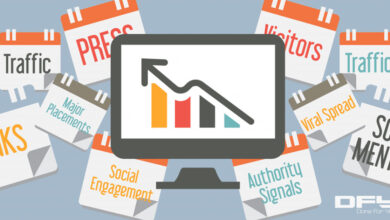In today’s digital landscape, social networking is more than a platform for sharing photos and opinions—it's a vital channel for getting visitors to websites and converting visitors into customers. To harness its full potential, businesses and marketers must track and analyze track social media traffic effectively.
What Is Social Media Traffic Tracking?
Social media traffic tracking refers to the process of monitoring and analyzing how users go to your website from social networking platforms like Facebook, Instagram, LinkedIn, Twitter (X), TikTok, and others. It helps determine the performance of your respective social campaigns, identify which platforms drive essentially the most valuable traffic, and uncover opportunities for growth.

Why Is It Important?
Measure ROI: See if your efforts on social media are generating website visits, leads, or sales.
Optimize Campaigns: Understand which posts, ads, or platforms are performing best.
Understand Your Audience: Get demographic and behavioral data about your social websites visitors.
Improve Content Strategy: Focus on the content types that drive one of the most engagement and traffic.
Key Metrics to Track
To evaluate social websites traffic effectively, take notice of the following metrics:
Traffic Sources: Know which platforms (e.g., Instagram, Facebook) are bringing in the most visitors.
Referral Path: See the specific posts or campaigns that drove traffic.
Sessions and Pageviews: Monitor what number of visits are derived from social platforms.
Bounce Rate: Learn how engaging your landing page is for social users.
Conversion Rate: Understand what number of of these visitors do something (purchase, subscribe, etc.).
Average Session Duration: See how long users from social networking spend on your website.
Tools for Tracking Social Media Traffic
Google Analytics (GA4)
Track social referrals under Traffic acquisition > Session source/medium.
Use UTM parameters to label links and distinguish between campaigns.
Monitor conversions from social sources.
Meta Business Suite (for Facebook & Instagram)
Provides insights into clicks, engagement, and just how much traffic your articles drives.
LinkedIn Campaign Manager / Twitter Analytics / TikTok Analytics
Track the performance of paid and organic content.
Social Media Management Tools
Tools like Hootsuite, Buffer, and Sprout Social offer integrated analytics that tie traffic and engagement together.
How to Use UTM Parameters for Better Tracking
UTM (Urchin Tracking Module) parameters are tags added to the end of URLs to follow the effectiveness of campaigns.
Best practices:
Be in keeping with naming conventions.
Always tag your links when posting externally.
Use URL shorteners as required to keep links clean.
Tips to Improve Social Media Traffic
Post as soon as your audience is most active.
Use compelling visuals and CTAs (calls to action).
Leverage stories and reels to advertise blog content or offers.
Engage along with your audience to further improve organic reach.
Promote evergreen content to keep up consistent traffic flow.
Tracking social media marketing traffic isn’t almost knowing how many people clicked a link—it’s about understanding behavior, optimizing content, and driving meaningful business outcomes. With the right tools and approach, it is possible to turn your social channels into powerful, data-driven traffic sources that help with your main point here.
